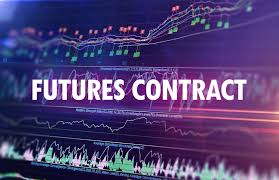
Understanding Futures Trading
Futures trading is a crucial component of the global financial markets, allowing investors to hedge against risks or speculate on the future prices of various assets. In this article, we will delve into what futures trading is, how it operates, the benefits and risks involved, and strategies traders employ to navigate this dynamic market. For a deeper dive into specific assets in the market, what is futures trading in crypto click here.
What are Futures?
Futures are contracts that obligate the buyer to purchase, and the seller to sell, an asset at a predetermined future date and price. These contracts are standardized agreements traded on exchanges, which means that they specify the quantity and quality of the underlying asset, the expiration date, and the trading unit. Futures can be based on a variety of assets, including commodities (like oil, gold, and wheat), currencies, stock indices, and even interest rates.
The Purpose of Futures Trading
There are primarily two reasons why traders participate in futures markets: hedging and speculation.
Hedging
Hedgers use futures contracts to protect against price fluctuations in the underlying asset. For instance, a farmer may sell futures contracts to lock in the price of their crop before harvest. This guarantees them a specific price regardless of market conditions at the time of harvesting, thus minimizing risk.
Speculation
Speculators, on the other hand, aim to profit from price movements. They analyze market trends and economic indicators to forecast the direction in which they believe prices will move. By buying or selling futures contracts, speculators can leverage their capital—using margin accounts to control large positions with a relatively small amount of capital.

How Futures Trading Works
Futures trading occurs on exchanges such as the Chicago Mercantile Exchange (CME) and the Intercontinental Exchange (ICE). The process begins with the establishment of a futures contract, which specifies the price and expiration date. These contracts can be bought or sold in the market by traders looking to take a position either long (buying) or short (selling).
Margin and Leverage
One of the attractive features of futures trading is the ability to trade on margin, which means traders can control a large position with a relatively small amount of capital. This leverage amplifies both potential profits and losses. Typically, futures exchanges require an initial margin—a percentage of the total contract value—and a maintenance margin, which is the minimum equity required to maintain the position.
Benefits of Futures Trading
- Liquidity: Futures markets are known for their high liquidity, allowing traders to enter and exit positions with ease.
- Diverse Opportunities: Futures are available for a wide range of assets, providing investment opportunities across various industries and markets.
- Price Discovery: Futures trading helps in determining the market price for assets based on supply and demand dynamics.
- Risk Management: Businesses and investors can effectively manage risk through hedging strategies using futures contracts.
Risks of Futures Trading
Despite the benefits, futures trading carries significant risks. The primary risks include:
- Market Risk: Prices can move against a trader’s position, leading to substantial losses.
- Liquidity Risk: While many futures markets are liquid, some may lack sufficient liquidity to support large trades without affecting prices significantly.
- Leverage Risk: While leverage can magnify profits, it can also lead to larger-than-expected losses, especially if the market moves unfavorably.
- Operational Risk: Technical issues or trading errors can occur, resulting in unforeseen losses.
Common Strategies in Futures Trading
Traders employ various strategies to succeed in futures trading. Here are a few common approaches:

Day Trading
This involves buying and selling futures contracts within the same trading day. Day traders look to capitalize on short-term price movements and typically close all positions by the end of the day.
Spread Trading
This strategy involves taking positions in two correlated futures contracts, betting on the price difference between them. Spread traders may go long in one contract while shorting another to hedge their risk.
Trend Following
This strategy involves analyzing charts and indicators to identify trends and make trades in the direction of that trend. Trend followers believe that prices will continue to move in the direction of the trend.
Hedging with Futures
As mentioned earlier, businesses may use futures contracts to hedge against price fluctuations in their underlying assets, ensuring price stability for their operations.
Conclusion
Futures trading is a sophisticated and multifaceted aspect of the financial markets. With its diverse applications in risk management and speculation, it presents opportunities and challenges for traders. Understanding the intricacies of futures contracts, the mechanics of trading, and the associated risks can empower both new and experienced investors to explore the potentials of the futures markets. As you consider entering the world of futures trading, thorough research and strategic planning are essential for navigating this complex landscape successfully.